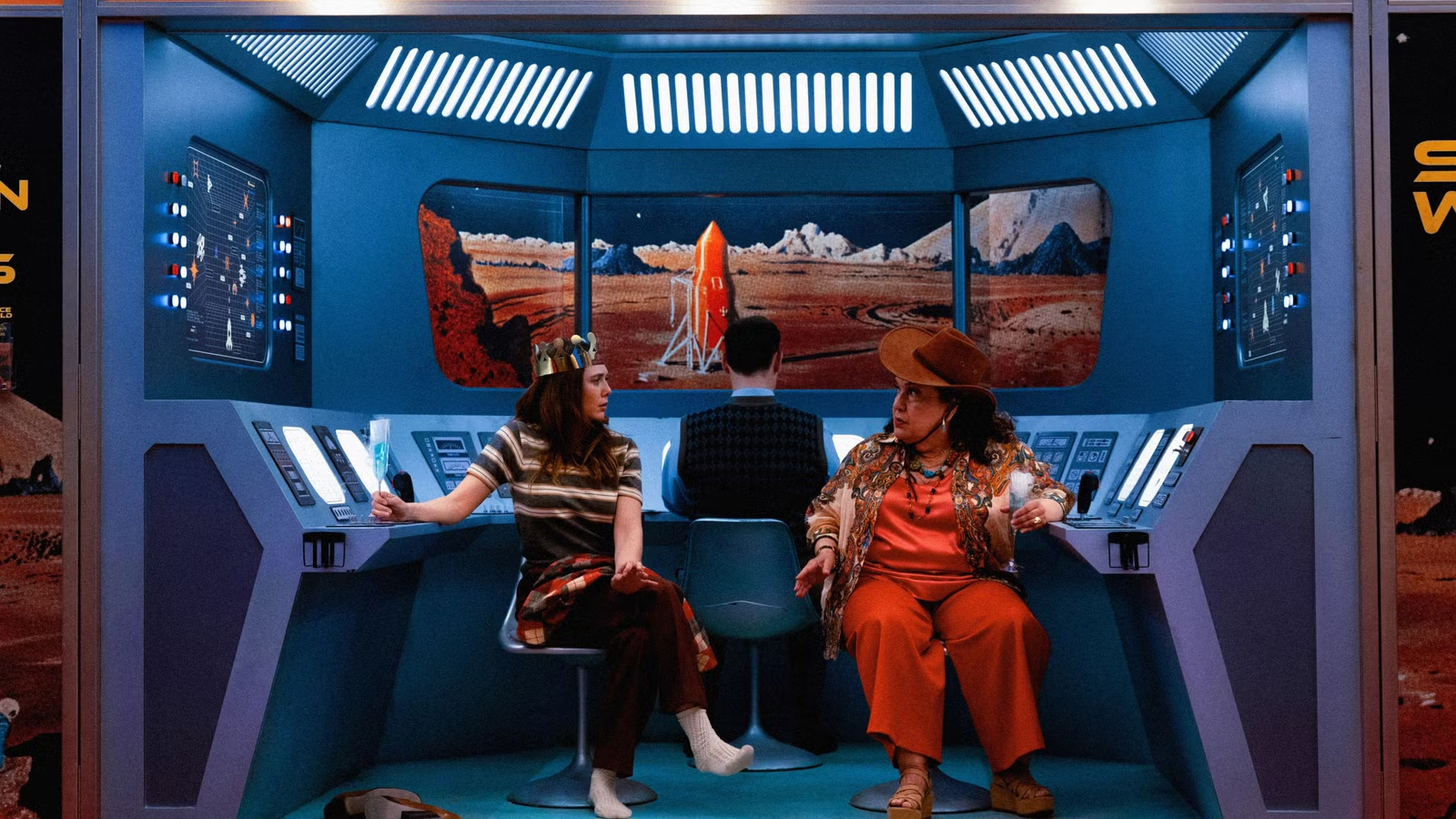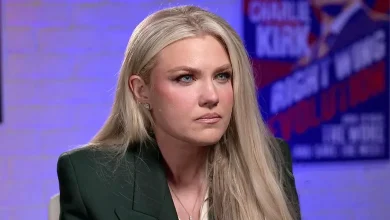Elizabeth Olsen’s new afterlife rom-com Eternity has a strange scientific origin

A24’s fantasy film Eternity is primarily a romance. When 90-something woman Joan (WandaVision star Elizabeth Olsen) dies, she arrives in a bright, busy, bureaucratic afterlife called The Junction, where she’s informed she has one week to choose which of her former husbands she wants to spend all eternity with. On one hand is Larry (Miles Teller), the man she was married to for 65 years of comfortable coupledom, companionship, and child-rearing, who died shortly before she did. On the other is Luke (Callum Turner), her first husband, who died young in the Korean war after a brief, passionate marriage. Luke has been devotedly waiting for her in The Junction for 67 years.
The movie’s most obvious question, asked again and again in different ways, is which man she’ll pick, and why, and what that says about the nature of love. But the intentionally unconventional world-building around this love triangle invites a lot more questions. In Eternity’s cosmology, souls shop around in The Junction’s sales floor, sorting through afterlives devoted to a specific theme, like Mountain Eternity (hiking, rustic cabins, ski-lodge-like resorts), Capitalism Eternity (dog-eat-dog financial competition), or The Weimar Republic But Without The Nazis Eternity (self-explanatory).
Once a soul picks a theme, they’re stuck in that eternity forever, no takebacks. And if they refuse to pick, they can stay in The Junction, but they have to work blue-collar jobs and live in crappy basement apartments. There’s a tongue-in-cheek humor to all of this, but it’s still hard not to ask “Who’s making all these weird, dystopic rules, and why?”
Minor spoiler alert: Eternity doesn’t address any of those questions, any more than similar posthumous-bureaucracy movies like A Matter of Life and Death, Defending Your Life, or After Life explain their setups. But director David Freyne (The Cured) tells Polygon that the movie’s fantasy setting does have a secret backstory that fills in a lot of the blanks.
“When I first started writing it and working on it with [co-writer Patrick Cunnane], I always had this idea that I wanted [the afterlife] to feel like a 1960s tourism expo,” Freyne says. “I wanted it to be this big chaotic space, surrounded by Brutalist architecture, which in the ’60s was the idea of utopia. The idea is that they redesigned this in the ’60s, which is recently for them, but long ago for us.”
But who’s the “they” in that setup? “We worked out all the science and logic of this place, and a lot of that was in the original script,” Freyne says. “I’m a big fan of sci-fi and fantasy, and there’s that thing of ‘You don’t need the explanation, you just need to know the author knows it.’ You don’t want a story to be slowed down by exposition. So we stripped some of that away, just having the confidence that the place makes sort of sense to an audience.”
Photo: Leah Gallo/A24
But for the curious: “The idea we always had was that the ARC protein created this place,” Freyne says. “That’s where your memories are, and your memories never die. So they just build up in this afterlife. Pat read this article about how memory comes from a virus. We all have it. The idea was, What if something about that virus just can’t die, even when your body dies? And that’s what created this place — those memories have to go somewhere.”
The structure of Eternity’s posthumous world is all planned around the same theme — for instance, people arrive in the afterlife or depart for their chosen eternities via trains, because a train system is an arterial structure, and it’s meant to reflect the arteries leading to the brain. But it’s also a way of expressing the idea that humanity’s deathless memories have to be moved and sorted into places, or they’ll just pile up in a central location. Case workers like Anna (The Holdovers’ Oscar-winner Da’Vine Joy Randolph) and Ryan (Search Party’s John Early) are charged with shuttling people along through the system, making sure there are no holdups.
“That’s where this idea of The Junction came from,” Freyne says. “You’re a collection of memories. Anna says it in the script: ‘All we are is a collection of memories.’ They have to go somewhere, they have to go to these other places, they can’t all clog up The Junction. So we worked all that out, then whittled it away from the script as we went along, going, This is just going to get confusing for an audience. We had a line in the script about the protein, and I was like, ‘Pat, I think we need to lose it, because it’s confusing people, and slowing down the pace.’ And he was like, ‘Oh yeah, my wife hates it, lose it.”
Photo: Leah Gallo/A24
“We put a lot of time into the world-building, and why this place works like it does, why it looks like it does,” Freyne says. “And why the architecture is the style it is, and even why the scenic bluffs are there, those kind of fake skies. I wanted it to feel like you’re on the back lot of a film set when the characters look out their windows, like it’s Singing In the Rain, or a Powell and Pressburger movie, which are my favorites. The idea that this is an artificial world they’ve created to make people feel slightly at home, even though it’s weird and creepy, and you’re in an odd stasis where there’s no real sky.”
Freyne says he and Cunnane even have ideas about “Kevin,” the mysterious figure behind the afterlife. Kevin is a punchline in Eternity — there’s no God, it seems, just layer upon layer upon layer of bureaucracy leading up to him. But Freyne doesn’t want to discuss him yet.
“You’re going to have to wait for the TV spin-off,” he says. “Maybe someday we’ll get a TV spin-off in The Junction, a workplace comedy, and we can explore it all.”
Eternity is in theaters now.





